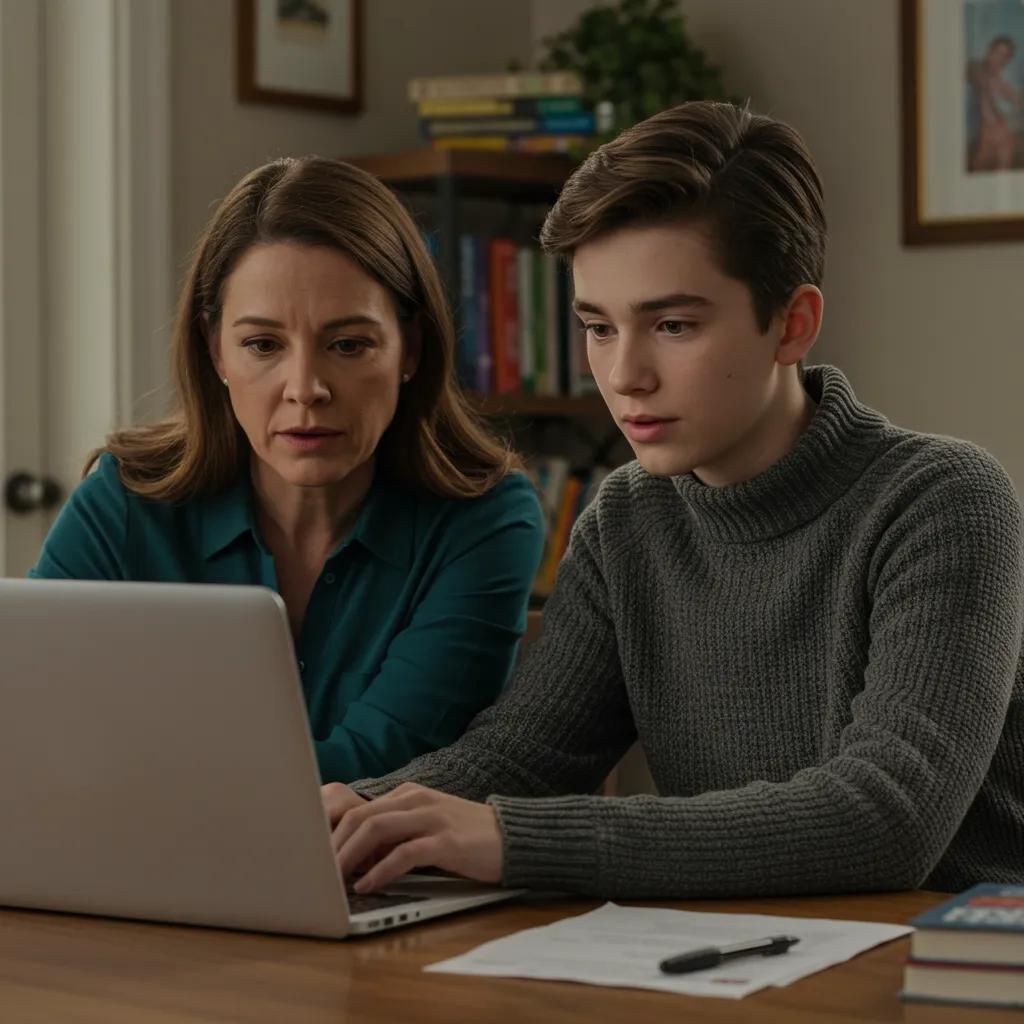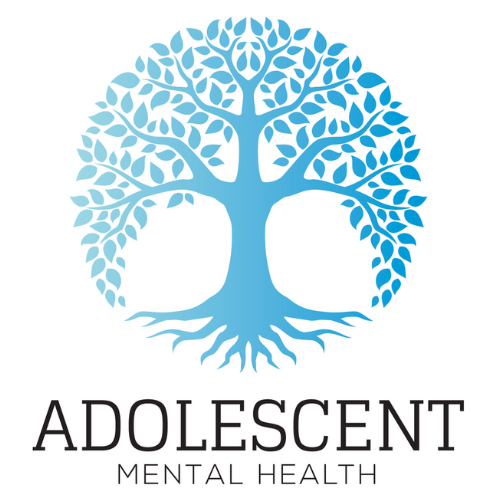When Should A Teenager See A Therapist? Signs, Benefits, and How to Find Help
Recognizing when a teenager should see a therapist starts with clear signs, not vague worries, and getting help early often prevents worsening symptoms and safety risks. This article explains what “seeing a therapist” means for adolescents, why early identification matters, and how therapy improves functioning and safety for teens experiencing anxiety, depression, behavioral changes, or trauma. You will learn the key emotional, behavioral, and physical warning signs to watch for, the evidence-based benefits of therapy for adolescents, how online options including Virtual Intensive Outpatient Programs fit into care pathways, and practical steps parents can take to find the right therapist.
For families considering structured options, the Virtual Intensive Outpatient Program (IOP) for Teens is introduced here as one accessible model offering more intensive, team-based support and a free assessment to determine fit. The following sections map signs that warrant assessment, the measurable benefits of treatment, how virtual IOPs work, and step-by-step guidance for selecting care for teens.
What Are the Key Signs a Teenager Needs Therapy?
A clear set of observable signs helps parents know when to seek professional care because persistent changes in mood, behavior, physical health, or functioning signal a clinical problem. Early identification reduces risk and improves response to evidence-based treatments like Cognitive Behavioral Therapy (CBT) and Dialectical Behavior Therapy (DBT). Below are grouped warning signs that together indicate a need for assessment, followed by practical examples families can monitor. Understanding these categories helps parents decide whether to pursue an initial clinical evaluation.
What Emotional and Mood Changes Indicate a Need for Therapy?
Emotional changes that persist for weeks and interfere with daily life often require professional evaluation because prolonged dysregulation undermines functioning and safety. Persistent sadness, tearfulness, hopeless statements, or excessive worry that limits activities are core red flags; suicidality or talk of self-harm demands immediate intervention. Anxiety that causes avoidance of school or social interaction, or intense irritability that disrupts family life, also indicates clinical concern. If mood changes affect sleep, concentration, or motivation over several weeks, a therapeutic assessment is warranted.
Which Behavioral Warning Signs Should Parents Watch For?
Behavioral shifts are often the clearest indicators that a teen needs help because changes show in everyday routines and relationships. Watch for withdrawal from friends, dropping grades, skipping school, or sudden interest in risky behaviors such as substance use or unsafe sexual activity. Self-harm, explicit threats, or talk of dying are urgent signals requiring immediate safety assessment and professional care. When these behaviors appear alongside mood changes, coordinated clinical treatment is usually indicated.
How Do Physical Symptoms Reflect Teen Mental Health Issues?
Physical complaints can reflect underlying mental health conditions because stress and mood disorders commonly produce somatic symptoms that mimic medical problems. Recurrent headaches, stomachaches, unexplained fatigue, or notable sleep and appetite changes—after medical causes are ruled out—are frequently linked to anxiety or depression. Persistent sleep disturbance and significant weight change often worsen mood and concentration; addressing the mental health component improves physical symptoms. When physical complaints coincide with emotional or behavioral signs, include a mental health assessment in the evaluation plan.
How Do Major Life Events Impact a Teen’s Mental Health?
Major life events such as bereavement, trauma, parental separation, bullying, or sudden moves can trigger acute stress reactions that sometimes evolve into longer-term problems if unaddressed. Normal adjustment involves fluctuating distress and recovery over weeks, but prolonged functional impairment, avoidance, or severe mood changes after an event suggest the need for therapy. Trauma-related symptoms like flashbacks, hypervigilance, or numbing require trauma-informed care and assessment. Early therapeutic support following significant events reduces the risk of chronic problems and supports adaptive coping.
What Are the Benefits of Therapy for Adolescents?

Therapy produces measurable improvements by teaching skills, stabilizing mood, and restoring functioning because evidence-based approaches target core mechanisms underlying teen distress. Cognitive Behavioral Therapy (CBT) restructures unhelpful thinking patterns, while Dialectical Behavior Therapy (DBT) builds distress tolerance and emotion regulation; both increase functioning at school and home. Therapy also strengthens family communication and peer relationships through structured family or group sessions, improving long-term resilience. Below are specific domains where therapy yields observable gains for teens.
Therapy benefits translate into practical outcomes, including better coping, improved relationships, and enhanced academic performance.
- Coping and Regulation: Therapy teaches skills that reduce emotional reactivity and improve problem-solving.
- Communication and Relationships: Family and group therapy improve conflict resolution and social support.
- Self-Esteem and Resilience: Goal-setting and strengths-based interventions boost confidence and persistence.
These benefits often appear within weeks of consistent work and grow with sustained practice and parental involvement.
| Therapy Type | Mechanism | Benefit/Outcome |
|---|---|---|
| Cognitive Behavioral Therapy (CBT) | Targets thoughts and behaviors | Reduced anxiety and depressive symptoms |
| Dialectical Behavior Therapy (DBT) | Teaches emotion regulation and distress tolerance | Fewer mood crises and improved coping |
| Family Therapy | Modifies interaction patterns | Better parent-teen communication and reduced conflict |
How Does Therapy Help Teens Develop Coping and Emotional Regulation Skills?
Therapy develops coping by teaching concrete skills that change responses to stress because skill rehearsal translates to real-world behavior change. CBT provides cognitive restructuring exercises to interrupt rumination and catastrophic thinking, while DBT supplies distress-tolerance techniques for crises. Therapists assign practice tasks between sessions to reinforce learning and measure progress through behavioral goals. As teens practice skills, they experience fewer uncontrolled emotional episodes and improved decision-making under stress.
In What Ways Can Therapy Improve Teen Communication and Relationships?
Therapy improves communication by creating a guided environment to practice healthy interaction patterns, which reduces miscommunication and conflict at home and school. Family therapy sessions teach structured problem-solving and listening skills that parents and teens can use outside sessions. Group therapy offers peer feedback and social skills practice that generalize to friendships and classroom interactions. Improved communication increases social support and reduces isolation, which strengthens mental health.
How Does Therapy Enhance Self-Esteem and Resilience in Teens?
Therapeutic work builds self-esteem through mastery experiences and cognitive reframing because success on achievable goals reinforces competence. Interventions focus on identifying strengths, setting incremental goals, and practicing new behaviors that yield positive feedback. Resilience grows as teens learn to navigate setbacks using learned coping strategies and supportive relationships. Over time, increased self-efficacy reduces vulnerability to future stressors.
What Academic and Social Improvements Result from Therapy?
Therapy improves academic and social outcomes by reducing symptoms that impair concentration, motivation, and attendance, thus enabling better school engagement. Reduced anxiety and depression correlate with improved grades, fewer absences, and better classroom behavior. Social improvements include increased participation, improved peer relationships, and reduced conflict. Schools and clinicians often measure progress via attendance records, grade changes, and teacher or parent reports.
| Outcome Area | Attribute | Benefit |
|---|---|---|
| Academic | Attendance and concentration | Improved grades and classroom participation |
| Social | Peer interaction and conflict management | Stronger friendships and reduced isolation |
| Behavioral | Impulse control and risky behavior | Fewer disciplinary incidents and safer choices |
This mapping shows how therapy yields practical benefits that families and schools can observe and track.
How Does Online Therapy and Virtual Intensive Outpatient Programs Support Teens?
Virtual IOPs and online therapy extend evidence-based treatment into the home environment, increasing access and intensity of care because telehealth removes logistical barriers and supports structured treatment schedules. A Virtual Intensive Outpatient Program for Teens provides a predictable weekly schedule, multiple therapy modalities, and a coordinated treatment team that monitors progress. These programs integrate CBT and DBT into a higher-contact model for adolescents who need more support than weekly outpatient therapy. Below is a focused definition and description of how virtual IOPs operate and why they suit many teens.
What Is a Virtual Intensive Outpatient Program for Teens?
A Virtual Intensive Outpatient Program for Teens is a structured online program delivering 9-15 hours of treatment per week for adolescents aged 12-17. The program combines individual, group, and family therapy in a scheduled format to provide intensive, consistent support while allowing teens to remain at home. This model suits teens with moderate-to-severe anxiety, depression, or behavioral challenges who require more than once-weekly therapy but do not need inpatient care. The virtual format increases accessibility for families facing transportation or scheduling barriers.
How Does Virtual IOP Work to Treat Teen Mental Health Conditions?
Virtual IOP programs use a coordinated treatment team that provides psychiatric care, clinical support, and progress monitoring while delivering CBT and DBT across sessions. Treatment planning begins with an assessment that establishes goals and safety plans, then schedules 9-15 hours weekly across individual, group, and family sessions. Psychiatrists or prescribing clinicians manage medication when needed, while therapists deliver skills training and therapeutic processing. Regular progress monitoring ensures adjustments to intensity or modalities based on measured response.
| Program Component | Attribute | Value |
|---|---|---|
| Contact Hours | Weekly intensity | 9-15 hours per week |
| Modalities | Session types | Individual, group, family therapy |
| Team Roles | Clinical support | Psychiatric care and progress monitoring |
Which Conditions Are Treated Effectively Through Virtual IOP?
Virtual IOPs effectively treat anxiety disorders, depressive disorders, and a range of behavioral health concerns because structured skill-based therapies address core symptoms. Conditions commonly managed include generalized anxiety, major depressive episodes, OCD, ADHD-related functional impairment, PTSD, and self-harm behaviors when monitored closely. Telehealth delivery preserves fidelity to CBT and DBT protocols while providing the intensity needed for moderate cases. For teens with complex or severe safety needs, providers may recommend higher levels of care, but many adolescents benefit from virtual IOP treatment.
How Does Virtual IOP Compare to Traditional In-Person Therapy?
Virtual IOP offers greater accessibility and structured intensity than traditional once-weekly in-person therapy because telehealth removes travel barriers and allows concentrated treatment hours. In-person therapy may be preferred for families without reliable internet access or when hands-on interventions are required, and some severe cases still need inpatient care. Virtual IOP provides comparable clinical components—CBT/DBT, psychiatric oversight, and family involvement—with the advantage of convenience and consistent scheduling. Families should weigh intensity, accessibility, and individual clinical needs when choosing between virtual and in-person options.
How Can Parents Find the Right Therapist for Their Teen?

Finding the right therapist involves targeted steps to verify credentials, therapy approaches, and fit, because adolescent mental health benefits from specialized experience and evidence-based modalities. Parents should prioritize clinicians with adolescent expertise, ask about CBT/DBT experience, confirm licensure, and review telehealth proficiency. A structured assessment determines appropriate intensity of care, from weekly outpatient therapy to a Virtual Intensive Outpatient Program for Teens when higher-contact treatment is needed. Below are practical action steps parents can follow when selecting care.
When preparing to find care, gather behavioral examples and school information to inform assessments and treatment planning.
- Verify credentials and adolescent experience: Ask about licensure and teen-focused work.
- Ask about therapy modalities: Confirm experience with CBT or DBT and family involvement.
- Discuss telehealth experience: Ensure the clinician is skilled in online adolescent work.
These steps help parents identify competent providers who match their teen’s clinical needs and logistical constraints.
| Provider Type | Attribute | Practical Tip |
|---|---|---|
| Licensed therapist | Specialization | Ask about adolescent caseload and training |
| Adolescent specialist | Evidence-based therapy | Request examples of CBT/DBT use with teens |
| Telehealth provider | Platform experience | Confirm privacy practices and session format |
What Steps Should Parents Take to Choose a Teen Therapist?
Begin with an assessment that clarifies diagnosis, safety, and recommended level of care because clinicians use this information to match intensity to need. Ask potential providers about licensure, adolescent specialization, evidence-based modalities, family involvement, and telehealth experience. Request a brief intake or consultation to evaluate rapport and logistical fit, and watch for red flags like vague treatment plans or refusal to coordinate care with schools. Use the assessment outcome to decide between weekly outpatient therapy or more structured options such as a Virtual Intensive Outpatient Program for Teens.
How Can Parents Talk to Their Teen About Therapy?
Approach the conversation collaboratively to reduce resistance because shared decision-making increases teen engagement in treatment. Use nonjudgmental language, validate the teen’s experience, and explain therapy as a skill-building resource rather than punishment. Offer choices about therapist selection, confidentiality limits, and participation to give the teen agency in the process. Emphasize that therapy focuses on coping and goals the teen cares about, which improves acceptance and attendance.
What Should Parents Expect During the Therapy Assessment Process?
An intake assessment typically involves a clinical interview, symptom and functional history, safety screening, and goal-setting because these elements guide level-of-care decisions. Clinicians may collect school reports, medical history, and family context to form a comprehensive picture. The assessment yields recommendations ranging from weekly outpatient therapy to a structured Virtual Intensive Outpatient Program for Teens when more support is needed. Expect a treatment plan with measurable goals and scheduled progress reviews.
How Do Insurance and Costs Affect Access to Teen Therapy?
Insurance coverage varies, so confirm in-network status and prior authorization requirements because these factors determine out-of-pocket expense and access speed. Ask providers about major insurance partnerships, sliding scale options, and whether they offer a free assessment as a low-barrier first step. For families considering structured care, a free assessment can clarify coverage and clinical fit before committing to a program. Understanding financial logistics early reduces surprises and speeds access to appropriate care.
- Check network status and authorization: Confirm what the plan covers.
- Ask about free assessment options: Use low-barrier evaluations to explore fit.
- Compare out-of-pocket vs. program benefits: Balance cost with intensity and outcomes.
This article has presented clear signs, evidence-based benefits, how virtual IOPs operate, and step-by-step guidance for finding adolescent care. If a teen shows multiple signs described here or needs structured support, consider an assessment to determine whether weekly therapy or a Virtual Intensive Outpatient Program for Teens is the appropriate next step. Adolescent Mental Health offers information and a free assessment option to help families decide on the right level of care.









